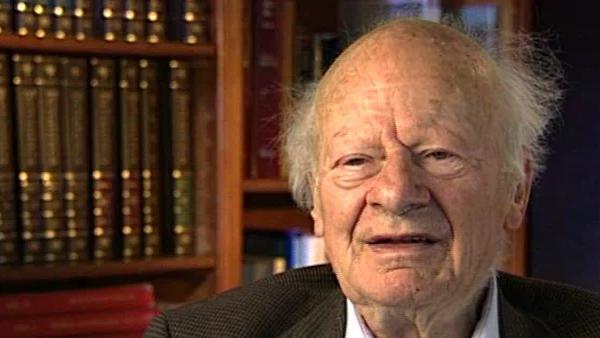NEXT STORY

Lecturing at Manchester University and Bragg's metal alloys
RELATED STORIES

NEXT STORY

Lecturing at Manchester University and Bragg's metal alloys
RELATED STORIES



I talked to Wigner, and Wigner found the solution and told it to me on a subway train from Columbia University to... to Penn Station, which was very noisy, but at that time I had good ears so I could hear him. So Wigner said 'Now look here, you know the binding energy of the deuteron which had a spin of one, that is, the spins of proton and neutron are parallel. But you don't know anything about what happens if the spins are antiparallel and you have total spin zero. How do you know that such a deuteron has the same binding energy?' And that indeed was the solution of the problem. The deuteron of spin zero has very small binding energy, and therefore a very large cross section for scattering of neutrons by proton. So Wigner gave us that solution which I later on put into a big, comprehensive article. Wigner himself never found it interesting enough to publish it, but Teller then followed it up and said 'Well, if the scattering depends so much on the relative spin of the... of proton and neutron, then there should be interesting effects when you use, at low temperature, a parahydrogen and orthohydrogen.' In parahydrogen you have a molecule in which the spins of these two protons are opposite; in orthohydrogen they are parallel. Now if you make parahydrogen therefore, you find out that your cross section will be quite different, and Teller got a very good postdoc to calculate that for him. His name was Julian Schwinger and they published an interesting paper and when the Columbia experimenters used parahydrogen, indeed they found all the effects that Teller and Schwinger had predicted.
The late German-American physicist Hans Bethe once described himself as the H-bomb's midwife. He left Nazi Germany in 1933, after which he helped develop the first atomic bomb, won the Nobel Prize in Physics in 1967 for his contribution to the theory of nuclear reactions, advocated tighter controls over nuclear weapons and campaigned vigorously for the peaceful use of nuclear energy.
Title: The deuteron disintegration theory disproved
Listeners: Sam Schweber
Silvan Sam Schweber is the Koret Professor of the History of Ideas and Professor of Physics at Brandeis University, and a Faculty Associate in the Department of the History of Science at Harvard University. He is the author of a history of the development of quantum electro mechanics, "QED and the men who made it", and has recently completed a biography of Hans Bethe and the history of nuclear weapons development, "In the Shadow of the Bomb: Oppenheimer, Bethe, and the Moral Responsibility of the Scientist" (Princeton University Press, 2000).
Tags: Eugene Wigner, Edward Teller, Julian Schwinger
Duration: 2 minutes, 39 seconds
Date story recorded: December 1996
Date story went live: 24 January 2008